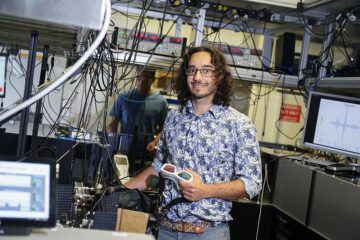Researchers Discover How Alzheimer’s Protein Behaves in Healthy Cells

Lawrence S. B. Goldstein and colleagues at the University of California in San Diego have now discovered how a protein involved in Alzheimer’s disease—the amyloid precursor protein (APP)—normally behaves in the healthy brain cells of both mice and fruit flies. This information, published today in Nature, suggests an all new mechanism by which Alzheimer’s might develop and thus opens new paths to explore towards potential therapies.
The researchers focused on APP because it has long been known to degrade into so-called amyloid beta plaques, which are seen in the brains of Alzheimer’s patients. What had remained mysterious was exactly how and where APP generates amyloid beta—and why that should lead to brain cell death. All cells in the body normally produce amyloid beta, Goldstein says, „that’s why we asked what was special about neurons that made them susceptible to damage caused by APP.“
They found that APP plays an important role in moving signals through axons—the projections along which neurons communicate. In fruit flies, they showed that a lack of APP hindered the neurons’ ability to send materials through axons. Too much APP clogged the axonal system and killed the neurons. These experiments appeared in Neuron last month. In the new report, they demonstrate in a mouse model that the transport system in question moves two enzymes—beta-secretase (Bace) and presenilin—that also seem to be responsible for breaking APP down into amyloid beta.
„Once amyloid beta has been generated, it is possible that the axonal pathway becomes physically blocked,“ Goldstein says. „We’re suggesting that with this blockage, a signal is generated saying that traffic is blocked and the neuron should die. Although this is only a first step in understanding the connection between APP, axonal transport and the location where amyloid beta is produced during disease, our work offers a possible approach for the eventual design of new Alzheimer’s therapies that directly target amyloid beta and APP transport.“
Media Contact
Weitere Informationen:
http://www.sciam.com/news/120601/2.htmlAlle Nachrichten aus der Kategorie: Medizin Gesundheit
Dieser Fachbereich fasst die Vielzahl der medizinischen Fachrichtungen aus dem Bereich der Humanmedizin zusammen.
Unter anderem finden Sie hier Berichte aus den Teilbereichen: Anästhesiologie, Anatomie, Chirurgie, Humangenetik, Hygiene und Umweltmedizin, Innere Medizin, Neurologie, Pharmakologie, Physiologie, Urologie oder Zahnmedizin.
Neueste Beiträge

Neue universelle lichtbasierte Technik zur Kontrolle der Talpolarisation
Ein internationales Forscherteam berichtet in Nature über eine neue Methode, mit der zum ersten Mal die Talpolarisation in zentrosymmetrischen Bulk-Materialien auf eine nicht materialspezifische Weise erreicht wird. Diese „universelle Technik“…

Tumorzellen hebeln das Immunsystem früh aus
Neu entdeckter Mechanismus könnte Krebs-Immuntherapien deutlich verbessern. Tumore verhindern aktiv, dass sich Immunantworten durch sogenannte zytotoxische T-Zellen bilden, die den Krebs bekämpfen könnten. Wie das genau geschieht, beschreiben jetzt erstmals…

Immunzellen in den Startlöchern: „Allzeit bereit“ ist harte Arbeit
Wenn Krankheitserreger in den Körper eindringen, muss das Immunsystem sofort reagieren und eine Infektion verhindern oder eindämmen. Doch wie halten sich unsere Abwehrzellen bereit, wenn kein Angreifer in Sicht ist?…





















